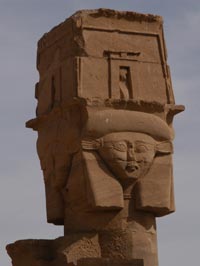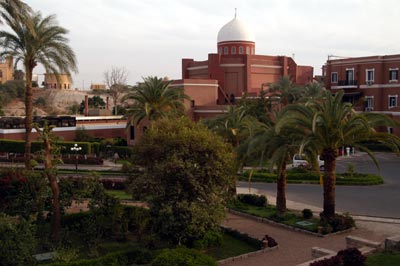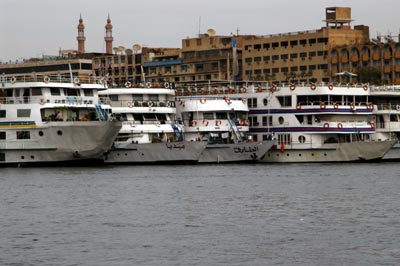










more photos
relevant links
Aswan
In ancient Egypt, Aswan usually marked the southern boundary of the Egyptian state. Today, it is the largest southern city (about 150K). This is the narrowest part of the Nile valley. Aswan is a particularly Nubian city, with colorful houses and a different language. The Nubians actually controlled Egypt in the 25th Dynasty, and it is probable that Cleopatra was a Nubian from the modern town of Wadi Halfa.

The monuments here are no match for those in Luxor (Thebes), but they are magnificent nonetheless. The temples of Philae and Kalabsha have been rescued from the giant Lake Nasser, and the Nile her is wide and slow and well suited for leisurely rides in a local boat, called a felucca. There are a few tombs here on the west bank (The tombs of the Nobles) and on the western shore are a few sights -- The Agha Khan Mausoleum, the Dome of the Winds, the ruined monastery of St. Simeon.
The island in the middle of the Nile, Elephantine, has been settled for millennia and early in the old kingdom the city of Yebu on the island became the border city between Egypt and Nubia. It was a base for mining in the south, for copper, tin, quartzite, and other precious stones.
Early egyptians believed that the source of the Nile was nearby, from beneath the earth at the first cataract. Another legend has it that the Greek geographer Eratosthenes deduced that the earth was round -- and was even able to calculate its diameter -- when he found a local well where the midday sun cast no shadow (and was thus on the tropic of cancer). He was only 80km off.

the courtyard of the Old Cataract Hotel
Aswan was also one of the last cities to be affected by Christianity, since the cult of Isis was very strong here. However, it is now a stronghold of Coptic christianity, supported in part by the monks of the nearby St. Simeon.
Aswan has been a tourist destination since the building of the first Aswan dam in 1902, when rich Europeans adopted it as a winter resort. However, most of the Nubian village to the south were flooded when the High Dam was built in 1970 and many were displaced to Aswan, which has continued to grow.
The real draw here, though, is the sleepy, friendly city. We lazed around on the veranda of the famous Old Cataract Hotel and watched the boats float by, took a boat trip to Kalabsha island to see the Temple of Mandulis, the Kiosk of Qertassi, and the little Beit el-Wali temple. A new Nubian restaurant, Dokka, opened on the island, and we enjoyed a fabulous meal there, and the Nubian museum is well worth a trip.

cruise ships lined up five deep along the shore